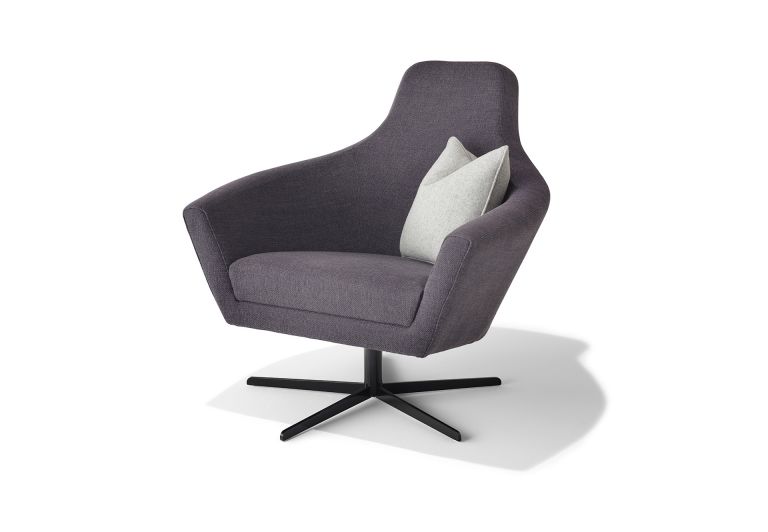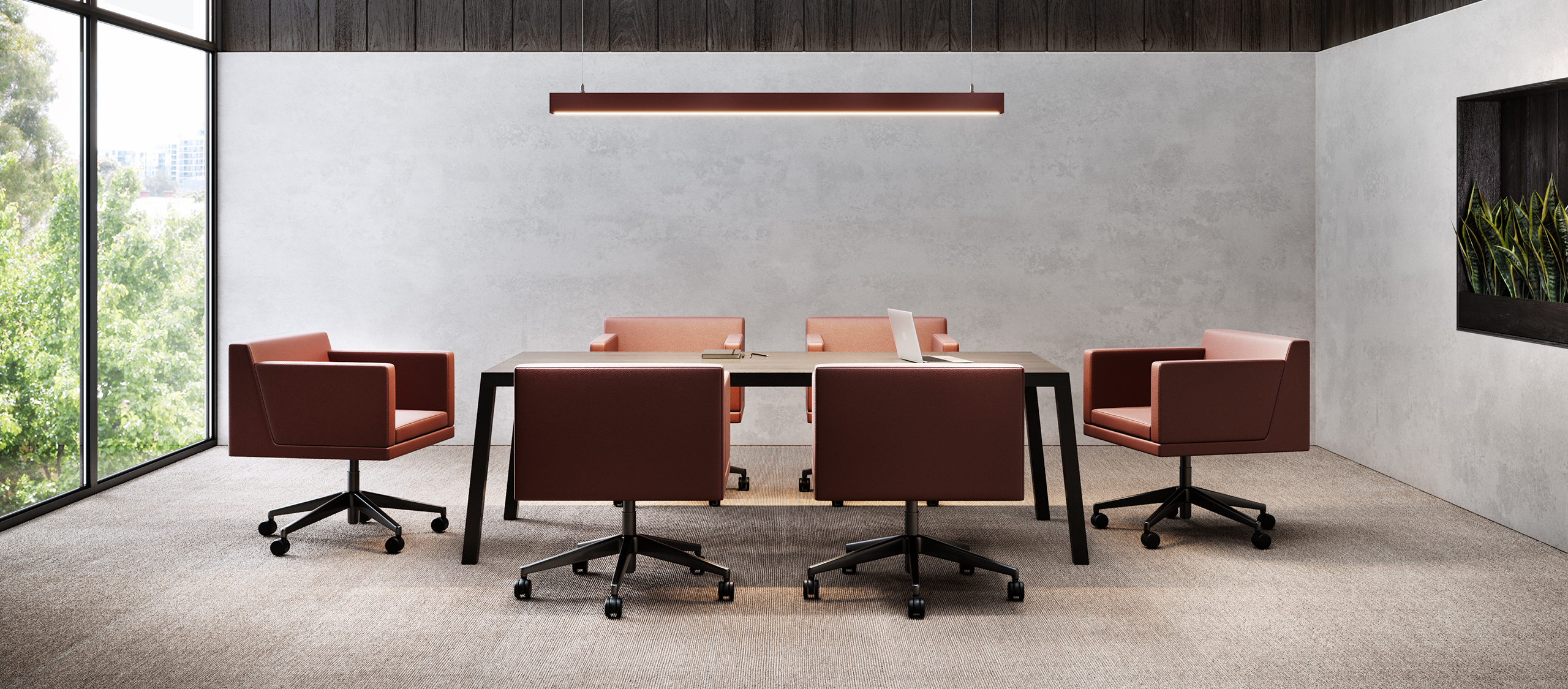Kayt Pause
Kayt Pause is an bold individual dining, meeting or waiting chair designed for formal and informal spaces across workplace, retail or hospitality. With a strong connection to the Kayt Collection through it's distinctive lines and legs, it is the personal solution of the statement collection.
Send enquiry







Overview
- Upholster individual chair from the Kayt Collection.
- 620W x 610W x 765H mm, view all Specifications.
- Legs in chromed steel or five star aluminium base with or without castors.
- Product of Australia

6-8 weeks
Pause’s distinctive lines express the connection between the seat and back elements, a unique language common to all elements within the collection, yet distinguishing it from many others of this typology. The full range features generous armchairs, sofas and optional loose cushions and tables to complement.
ColourLab finishes
Category B / Matador
-

-

-

-

-

-

-

-

-

-

-

-

Category C / Medici
-

-

-

-

-

-

-

-

-

-

-

-

Category D / Heirloom
-

-

-

-

-

-

-

-

-

-

-

Category A / Focus
-

-

-

-

-

-

-

-

-

-

-

-

-

-

-

-

-

-

-

-

-

-

-

-

-

-

-

-

Category A / Cairo
-

-

-

-

-

-

-

-

-

-

-

-

-

-

-

Category B / Rave (Healthcare)
-

-

-

-

-

-

-

-

-

-

-

-

Category B / Autumn
-

-

-

-

-

-

-

-

-

-

-

-

-

-

Category C / Merit
-

-

-

-

-

-

-

-

-

-

-

-

Category C / Mode
-

-

-

-

-

-

-

-

Category D / Atlas
-

-

-

-

-

-

-

-

-

-

-

-

POA / Remix 3
-

-

-

-

-

-

-

-

-

-

-

-

-

POA / Steelcut Trio 3
-

-

-

-

-

-

-

-

-

-

-

-

-

-

-

-

-

-

-

-

-

Chrome
-

Category A / Metal Powder Coat
-

-

-

-

Category B / Metal Powder Coat
-

-

-

-

-

-

-

-

-

-

-

-

-

-

-

-

-

-

In the early 2000s, agile working reached a critical point – it was overtaking traditional layouts as the office go-to and was beginning to influence the way businesses operated and thought about their approaches to work. And with this change in operations, a similar change in workplace solutions was required, making way for flexible furniture that allowed staff to move about and adopt different spaces to suit their dynamic work styles.
In response, Schiavello, along with Ivan Woods, came up with the first significant, cohesive and innovative furniture collection of the agile generation: the Kayt collection. Kayt pioneered soft architecture with its ability to create private spaces within an open plan office without disrupting any actual structural elements of the building.
A collection of soft seating options and coffee tables, Kayt Pause is a flexible armchair suited to boardrooms as well as waiting areas, education facilities and libraries. As part of the collection, Kayt Pause pairs well with Kayt Lounge, an individual, two or three-seater solution with the same aesthetic and intent as its Pause counterpart. Scatter Kayt Pauses and Kayt Lounges throughout a floorplan for an ultimate offering.
From the dawn of the agile working era through to now, Kayt has made ease of flexible working and the range’s various iterations have provided agile workers with forward-thinking, premium workplace furniture solutions.
The late Ivan Woods designed interiors and products for over 30 years. His work drew inspiration from his travels and interior architecture training in Perth, Australia. Working across projects within the UK, US, Germany and Italy, Ivan specialised in hotel and workspace design.
Schiavello and Ivan Woods maintained a solid history together. Our collaborative design process, which evolved over a decade, yielded distinctive collections such as Toro Collection in 2011, Palomino Chair in 2014, and both Kayt Village and Bomba Sofa in 2015.
With a strong architectural sensibility and carefully considered geometry, Ivan enriched his designs' emotional qualities in the fine detailing and sense of place. Ivan explained, "Good design is the creation of spaces, experiences and objects, embedded with strong and dynamic emotional connections to the people that use them. This is done through reflecting a sense of place, with a cultural authenticity and aesthetic.”
Related Products

Paloma Chair





